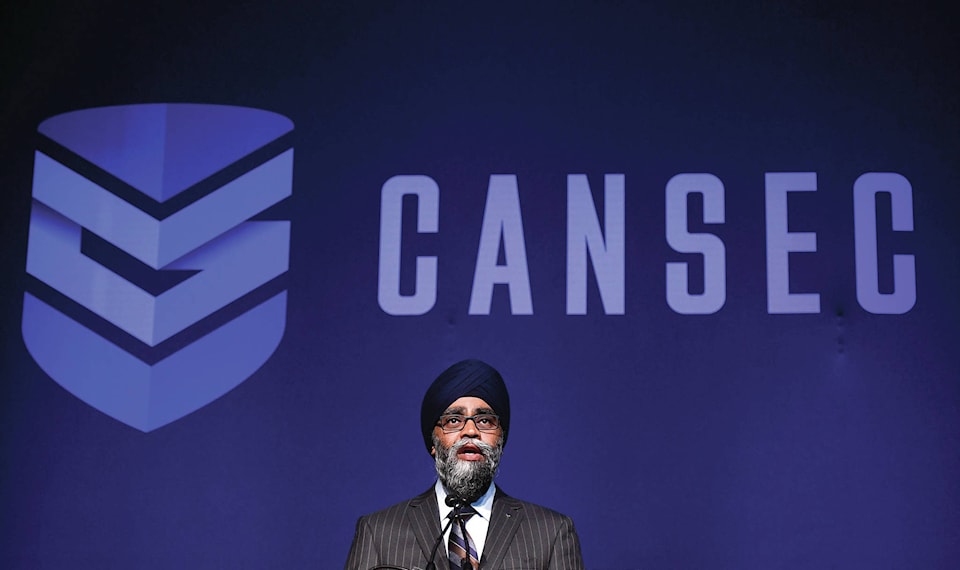OTTAWA — The federal government spent $2.3 billion less than originally planned last year on new military gear, Defence Minister Harjit Sajjan revealed Wednesday, even as a prominent economic adviser to the Liberals sang the praises of investing in the defence sector.
The spending shortage, which will require Canada’s military to continue to use some equipment longer than expected, means the government is already losing ground on the promise it made last year to invest $62 billion in the Forces over the next 20 years.
The mixed messages came during the first day of the two-day Cansec gathering in Ottawa, Canada’s largest annual arms show, where officials from the world’s biggest defence companies descend on the national capital to pitch their wares to the government and military.
Sajjan kicked off the event with an update on the Liberal government’s new defence policy — a blueprint that details the specific equipment the military intends to buy over the next five years.
Many companies had been eagerly waiting to see which of the dozens of projects included in the multibillion-dollar defence policy were considered a priority and which were being put on the back burner.
What they heard instead was that the ambitious Liberal plan to ramp up spending got off to a slower start than expected: where Ottawa had planned to spend $6.2 billion last year, figures published with the defence policy show, they only managed to get $3.9 billion out the door.
Sajjan played down the discrepancy, saying a portion of the unspent money represented savings that the government was able to find on some projects, while others were the result of companies not fulfilling their obligations.
But he also admitted later that for some projects, “we weren’t able to get it to the level we wanted. We’re improving on that and things have improved drastically for this. It will improve as time goes on.”
Defence companies won’t be the only ones hoping Sajjan is right.
One of the government’s most influential economic advisers told a luncheon audience that Canada’s defence industry will be critical to sparking innovation and ensuring the country’s prosperity over the long term.
“If we want to grow — and we can in Canada, and we want to grow more significantly — the defence sector is going to play an essential part in doing that,” said Dominic Barton, the chair of Finance Minister Bill Morneau’s growth council.
Automation is expected to cost Canada some 2 million jobs in the coming decades, Barton said, but the defence sector is one area where there is potential for substantial growth. as well as technological developments to help build and grow new industries.
“This is how we’re going to get some of the leading-edge innovation that we can then commercialize and transform the broader economy,” he said, adding that the government can support small businesses with defence investments.
The defence sector currently supports 60,000 jobs in Canada and sells an estimated $6 billion worth of arms and equipment to other countries each year —some of them causing headaches for the government because of questionable human rights records.
One of the more controversial sales was a multi-year, $15-billion contract for the provision of armoured vehicles to Saudi Arabia, which was the top non-U.S. destination for Canadian arms in 2016.
